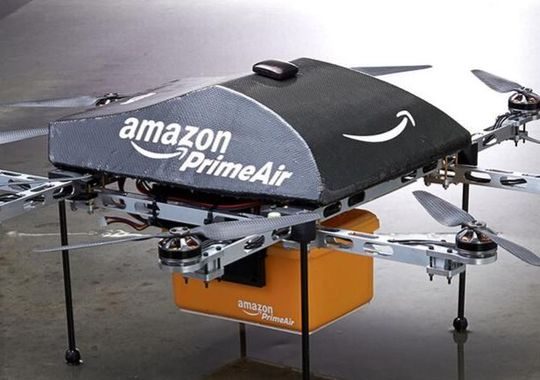
The patent, which outlines communications systems, sensors to detect problems, and other equipment designed to provide the drones with “failsafe” protection, says that threats to the drones could take multiple forms. “During navigation, an adversarial person… may attempt to disrupt communications between the UAV and the destination computing device by using a … device such as a wireless signal jammer. In another example, the adversarial person may use a weapon to inflict damage to the UAV. In yet another example, other signal sources may accidently cause interference between the data transfer between the UAV and the destination computing device. These threats may cause a variety of adverse effects including the UAV being redirected to an unintended location, destruction of the UAV, and so forth.”
The solutions proposed cover a seemingly limitless array of potential problems. The patent includes technology which would allow the drone to signal when a potential compromise has occurred and take protective measures. For example, the drone could communicate with other drones in the fleet to act as backup; communicate with a controller who could override routing issues; or could automatically return to a safe place or to the ground. There is provision for backup power systems in case of failure or sabotage. Drones could also feature an alarm system, which would emit a loud siren noise when the drone was under attack. And in an approach reminiscent of science fiction, a drone under attack might be able to call on other drones in the fleet to assist. “In some implementations, a plurality of [drones] may operate collaboratively. For example, [drones] within communication range of one another … may be configured to establish the mesh network…and exchange information such as current location data 134, a bearing of the neighboring [drone] as determined by another sensor, and so forth. By comparing the information from neighboring [drones], the compromise module …may determine a compromise to one or more of the [drones] has occurred.”
Amazon appears to be moving forward with their drone delivery program quickly, announcing last week that they had performed their first residential delivery in the UK.

Miriam McNabb is the Editor-in-Chief of DRONELIFE and CEO of JobForDrones, a professional drone services marketplace, and a fascinated observer of the emerging drone industry and the regulatory environment for drones. Miriam has penned over 3,000 articles focused on the commercial drone space and is an international speaker and recognized figure in the industry. Miriam has a degree from the University of Chicago and over 20 years of experience in high tech sales and marketing for new technologies.
For drone industry consulting or writing, Email Miriam.
TWITTER:@spaldingbarker
Subscribe to DroneLife here.